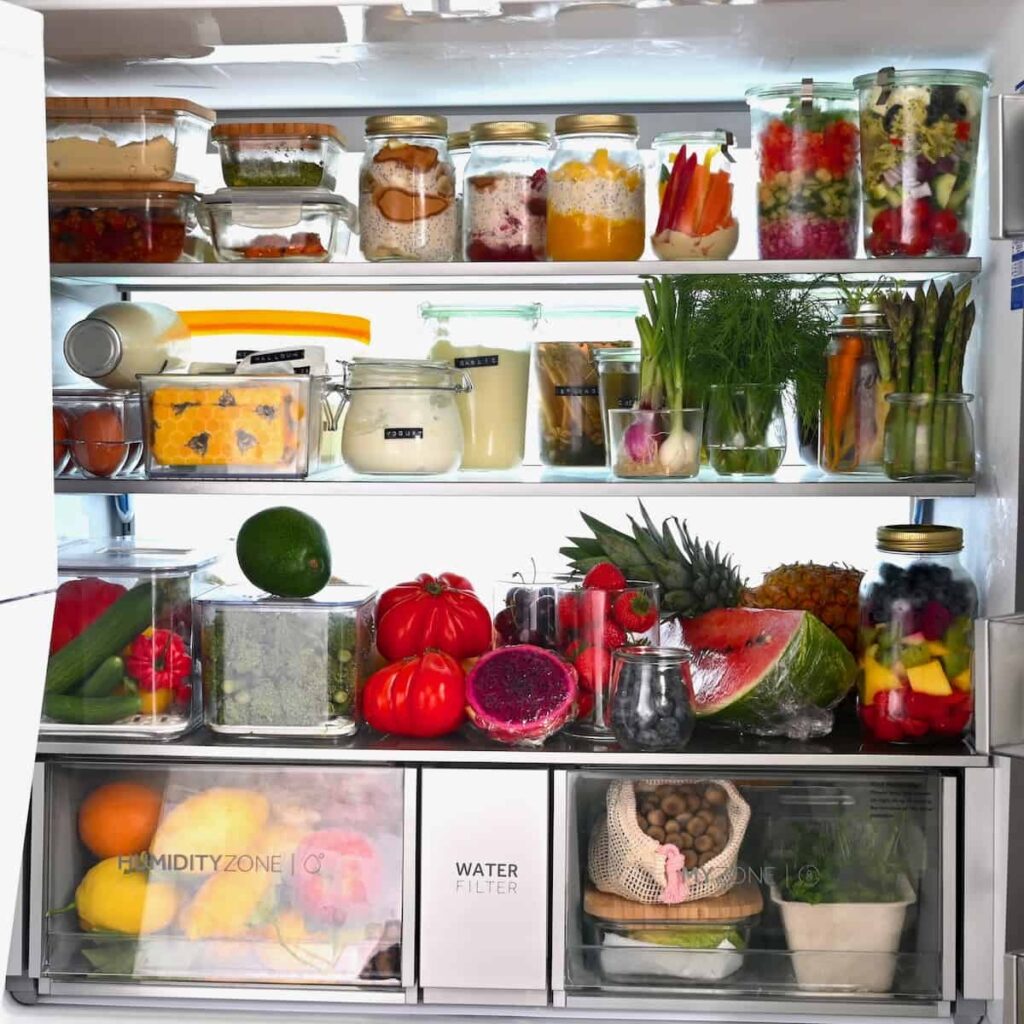Our refrigerators hum away faithfully, keeping our food fresh and drinks frosty. But those cool features can come at a cost – a hefty energy bill! Did you know that inefficient refrigerators are hidden energy guzzlers in our homes? They can be a major contributor to your utility bill, and even worse, to our environmental impact.
The good news is there’s a hidden potential for savings within your fridge! By implementing some simple energy-saving tips for refrigerators and maybe even considering an energy-efficient model upgrade, we can transform our refrigerators from eco-villains into sustainable superheroes. Get ready to chill out your energy use and watch those savings pile up – both for the planet and your wallet!
Key Features of Energy-Efficient Refrigerators
Advanced Insulation Technology
Modern refrigerators utilize advanced insulation materials that minimize energy loss. These materials provide superior thermal resistance, ensuring that the cold air remains inside the unit, thereby reducing the need for the compressor to run frequently.
Energy-Efficient Compressors
Energy-efficient compressors are designed to operate with greater precision and less power. These compressors adjust their speed based on the cooling demand, which not only conserves energy but also extends the lifespan of the refrigerator.
LED Lighting
LED lighting is a standard feature in energy-efficient refrigerators. LEDs consume less power compared to traditional incandescent bulbs and produce less heat, which reduces the overall cooling load on the appliance.
Energy-Saving Tips for Refrigerators: Optimizing Energy-Efficiency
Proper Placement
Placing the refrigerator in an ideal location is one of the best energy-saving tips for refrigerators. The fridge should avoid heat sources such as ovens, dishwashers, and direct sunlight. Also, ensuring adequate ventilation around the unit allows for better heat dissipation, which helps the compressor work more efficiently.
Regular Maintenance
Regular maintenance is key to keeping a refrigerator running efficiently. One of the most important tasks to save energy in refrigerators is cleaning the condenser coils. Dust and debris on the coils force the compressor to work harder, increasing energy consumption. It is recommended to clean the coils at least twice a year.
Appropriate Temperature Settings
Maintaining the refrigerator temperature between 35°F and 38°F (1.7°C to 3.3°C) and the freezer at 0°F (-18°C) is ideal for food safety and energy efficiency of refrigerators. These settings ensure food safety while minimizing energy usage.
Organized Storage
An organized refrigerator enhances airflow and reduces the time the door remains open during searches. Grouping similar items and keeping frequently used items within easy reach can help maintain a consistent internal temperature.
Ensuring a Proper Seal
Another tip for an energy-saving refrigerator is with its door seals or gaskets. These components should be inspected regularly for cracks or wear. A tight seal prevents warm air from entering the refrigerator, which keeps the compressor from overworking. Replacing damaged seals promptly is essential for maintaining energy efficiency.
The Role of Technology in Enhancing Energy Efficiency
Smart Refrigerators
Smart refrigerators equipped with energy management systems provide real-time data on energy usage. These systems can adjust settings automatically to optimize efficiency based on usage patterns.
Inverter Technology
Inverter technology allows the refrigerator to operate at varying speeds, depending on the cooling demand. This innovation ensures that the fridge uses only the necessary amount of energy, leading to significant savings over time.
Eco Mode
Many modern refrigerators come with an Eco Mode setting, which optimizes energy consumption by adjusting cooling cycles and reducing power usage during low-demand periods, such as at night or when the household is away.
Benefits of Energy-Efficient Refrigerators
Reduced Energy Bills
Energy-efficient refrigerators consume less power, leading to lower monthly utility bills. Over the lifespan of the appliance, these savings can be substantial.
Environmental Impact
By reducing energy consumption, energy-efficient refrigerators help decrease the overall demand on power plants, many of which burn fossil fuels. This reduction in energy use translates to fewer greenhouse gas emissions and a smaller carbon footprint.
Enhanced Durability
Refrigerators designed with energy efficiency in mind often have components that experience less wear and tear. This results in fewer repairs and a longer operational life for the appliance.
Conclusion
Investing in an energy-efficient refrigerator and adopting best practices for its use and maintenance can lead to significant cost savings and environmental benefits. With advanced features and smart technology, modern refrigerators are designed to provide optimal performance while conserving energy. By understanding and implementing these energy-saving tips for refrigerators, as well as opting for professional repairs from Platinum Sub Zero Repair, you can contribute to a more sustainable future.
FAQs
- How can I use less energy in my fridge?
Set the temperature a couple of degrees cooler (around 3°C for the fridge and -18°C for the freezer), open the door less often by grabbing everything at once, and keep it closed as much as possible. Organize your fridge for good air circulation, avoid a crammed space, and defrost regularly to prevent frost buildup.
- Is it cheaper to run a fridge full or empty?
A full fridge is slightly more energy-efficient because the food helps maintain the cool temperature, but avoids overcrowding as it can block airflow.
- What makes the fridge consume more electricity?
An incorrect temperature setting (too cold), frequent door openings, frost buildup, an old and inefficient model, and being located near heat sources like ovens all contribute to higher energy consumption by your fridge.
Be the first to know—subscribe for the latest updates!


